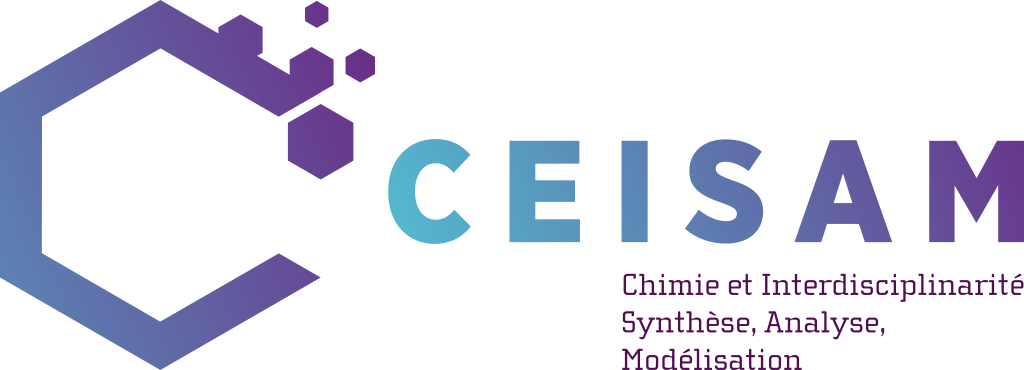Photostructurable magnetic nanoarchitectures
Nanoarchitectures magnétiques photostructurables
Résumé
The integration of nanoparticles within devices allows to exploit the remarkable functionalities inherent to the nanoscale. To organize or manipulate nanoparticles, many topdown and bottom-up strategies have been developed over the last twenty years, but their industrial exploitation remains a challenge. In this context, the use of light as a structuring tool opens new perspectives in terms of speed and easiness of implementation since it offers remote activation using tunable wavelengths, light intensities and polarizations. In this work, we study the possibility of organizing magnetic nanoparticles through the photoinduced displacement of a photochromic matrix doped with magnetic nanoparticles and the application of a magnetic field. As a first step, the proposed approach involves the synthesis of photochromic azo molecules with bulky groups to facilitate photochromism in thin films. Superparamagnetic magnetite nanoparticles with diameter of about 20 nm are also synthesized. In a second step, the organization of the nanoparticles is performed under interferential illumination of thin films exclusively composed of azo photochromes and magnetic nanoparticles. Under the effect of polarized light, the photochromic molecules undergo mass transfer caused by EZ photoisomerization reactions. Surface arrays are then formed and can be reversibly erased and rewritten. The displacement of magnetic nanoparticles is driven by the photomigration of azo molecules, which leads to their accumulation in the troughs of the surface relief gratings. The application of a magnetic field gradient during irradiation provides the nanoparticles with an additional driving force for displacement during patterning, or trapping during the structure flattening upon optical erasure. Obtaining magnetic patterns on a nanometric scale opens up prospects for the fabrication of systems that help in fighting against counterfeiting.
L’intégration de nanoparticules au sein de dispositifs permet d’exploiter les fonctionnalités remarquables inhérentes à l’échelle nanométrique. Pour organiser ou manipuler les nanoparticules, de nombreuses stratégies topdown et bottom-up ont été développées au cours des vingt dernières années, mais leur exploitation industrielle demeure un défi. Dans ce contexte, l'utilisation de la lumière comme outil de structuration ouvre de nouvelles perspectives en termes de rapidité et de facilité de mise en oeuvre puisqu'elle offre une activation à distance en utilisant des longueurs d’ondes, des intensités lumineuses et des polarisations variables. À travers ces travaux, nous étudions la possibilité d'organiser des nanoparticules magnétiques grâce au déplacement photoinduit d’une matrice photochrome dopée de nanoparticules magnétiques et à l'application d'un champ magnétique. Dans un premier temps, l’approche envisagée implique la synthèse de molécules azoïques photochromes dotées de groupes encombrants pour faciliter le photochromisme sous forme de film mince. Des nanoparticules superparamagnétiques de magnétite d’un diamètre d’environ 20 nm sont également synthétisées. Dans un second temps, l'organisation des nanoparticules est réalisée sous illumination interférentielle de films minces constitués exclusivement de photochromes azoïques et de nanoparticules magnétiques. Sous l'effet d'une lumière polarisée, les molécules photochromes subissent un transport de matière provoqué par des réactions de photoisomérisation E-Z. Des réseaux de surface sont alors formés et peuvent être effacés et réécrits de manière réversible. À leur tour, les nanoparticules magnétiques sont entraînées par la photomigration des molécules azoïques et s'accumulent dans les creux des réseaux de surface. L'application d’un gradient de champ magnétique pendant l’irradiation constitue pour les nanoparticules une force motrice supplémentaire de déplacement lors de la structuration, ou de piégeage lors de l’aplanissement des structures par effacement optique. L’obtention de motifs magnétiques à l’échelle nanométrique ouvre des perspectives dans la fabrication de systèmes aidant à la lutte contre la contrefaçon.
Origine : Version validée par le jury (STAR)
